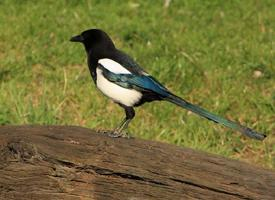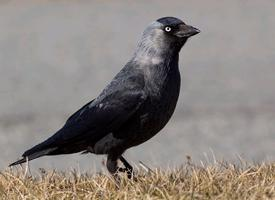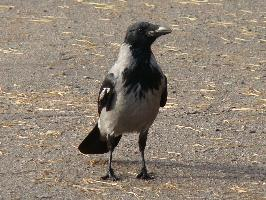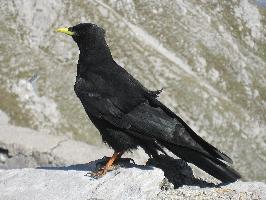
Popis zvířete
The Alpine chough, scientifically named Pyrrhocorax graculus, is a striking bird species belonging to the crow family, Corvidae. This bird is particularly notable for its adaptation to high-altitude environments, predominantly found across the mountain ranges of Europe and Asia, including the Alps, the Pyrenees, the Himalayas, and other elevated regions. The Alpine chough has developed unique physiological and behavioral traits that enable it to thrive in these harsh, oxygen-scarce habitats, making it a subject of interest for both ornithologists and nature enthusiasts.Physically, the Alpine chough is a medium-sized bird, measuring approximately 34-39 centimeters in length, with a wingspan of about 75-85 centimeters. One of its most distinctive features is its deep black plumage, which contrasts sharply with its bright yellow beak and red legs, giving it a striking appearance against the often snow-covered landscapes it inhabits. The bird's feathers have a glossy quality, particularly noticeable in sunlight, which adds to its visual appeal.
The Alpine chough is highly adapted to life at high altitudes. Its hemoglobin has a higher affinity for oxygen than that of lowland birds, allowing it to efficiently extract oxygen from the thin mountain air. Furthermore, its strong, curved beak is perfectly designed for probing and picking at soil or snow in search of food, which primarily consists of invertebrates during the summer. In the colder months, its diet shifts more towards plant material, including berries and grains, showcasing its ability to adapt its feeding habits to the changing seasons.
Socially, the Alpine chough is a gregarious bird, often found in large flocks, especially outside the breeding season. These flocks can sometimes number in the hundreds, creating spectacular aerial displays with their acrobatic flight patterns. The species is known for its loud, distinctive calls, which include a variety of caws and chattering sounds that are crucial for communication within these large groups.
When it comes to reproduction, the Alpine chough is monogamous, forming long-term pair bonds. Nests are typically built in high, inaccessible locations such as cliff faces or deep cave entrances, providing protection from predators. These nests are constructed from twigs and lined with softer materials like grass and feathers. Females lay between 3 to 5 eggs per clutch, with both parents involved in incubation and feeding the chicks once they hatch.
Despite facing threats from habitat destruction and climate change, which can alter the ecosystems of high-altitude environments, the Alpine chough has shown remarkable resilience. However, continued monitoring and conservation efforts are essential to ensure that this unique species can continue to flourish in its mountainous realms.
In conclusion, the Alpine chough, with its distinctive appearance, remarkable adaptations to high-altitude living, and complex social behaviors, is a fascinating example of nature's ability to evolve specialized traits in response to extreme environmental challenges. Its presence in the mountainous landscapes of Europe and Asia adds a layer of intrigue and beauty to these already breathtaking environments.
Mapa výskytu
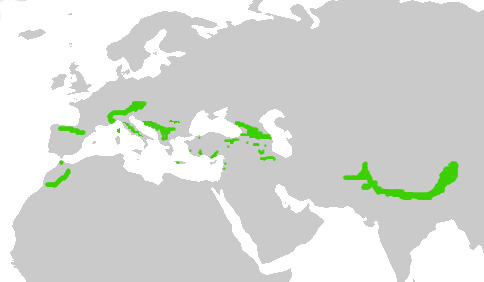
Podobná zvířata
Nové fotografie zvířat
Top 10 zvířat
- Chinese water dragon (Physignathus cocincinus)
- Galápagos tortoise (Geochelone nigra complex)
- Dolphin gull (Leucophaeus scoresbii)
- Japanese macaque (Macaca fuscata)
- Colombian red howler (Alouatta seniculus)
- Sea urchins (Echinoidea)
- Moustached guenon (Cercopithecus cephus)
- Diana monkey (Cercopithecus diana)
- Common reed warbler (Acrocephalus scirpaceus)
- Common house mosquito (Culex pipiens)
